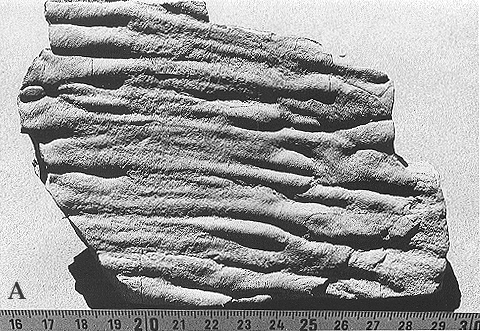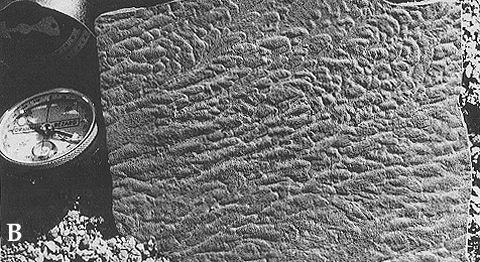

Current markings on lamination surfaces
Plate 96


Current markings on lamination surfaces
Plate 96
Shown here are fissile sandstones split into individual laminae or laminasets, whose surfaces can show delicate markings parallel to the paleocurrent. Splitting occurs preferentially along surfaces of weakness, where fine or lamellar particles (mica, vegetal debris) are often concentrated. These intrastratal markings were probably produced by current drag in a way similar to that responsible for the structure seen in plate 95. The tubular vortexes were smaller in this case, and confined to a thin layer of water close to the depositional interface. The marks are also more parallel than dendritic types, although some convergence ("fleur-de-lys pattern") can be seen in 96 B. The furrows are interrupted by arcuate septa that point to the current direction and suggest a certain resemblance with flute casts.
These two examples do not adequately document the considerable morphological variety of intrastratal marks. A comprehensive term proposed for the structure is longitudinal furrows and ridges.
The examples shown here derive from turbiditic sediments, in particular from the b division (plane-parallel laminae) of the Bouma sequence (see plate 69, inset). As we know, in turbidites, laminae record tractive effects of a waning current; contrary to basal marks, which reflect the current direction before it starts deposition, intrastratal marks are produced during deposition. Their value and utility, as indicators, consist in allowing us to check whether the current kept its initial direction or made some turn or deviation while depositing its sand load.
Marnoso-arenacea Formation, northern Apennines.
| Photo: G. Piacentini 1970. |